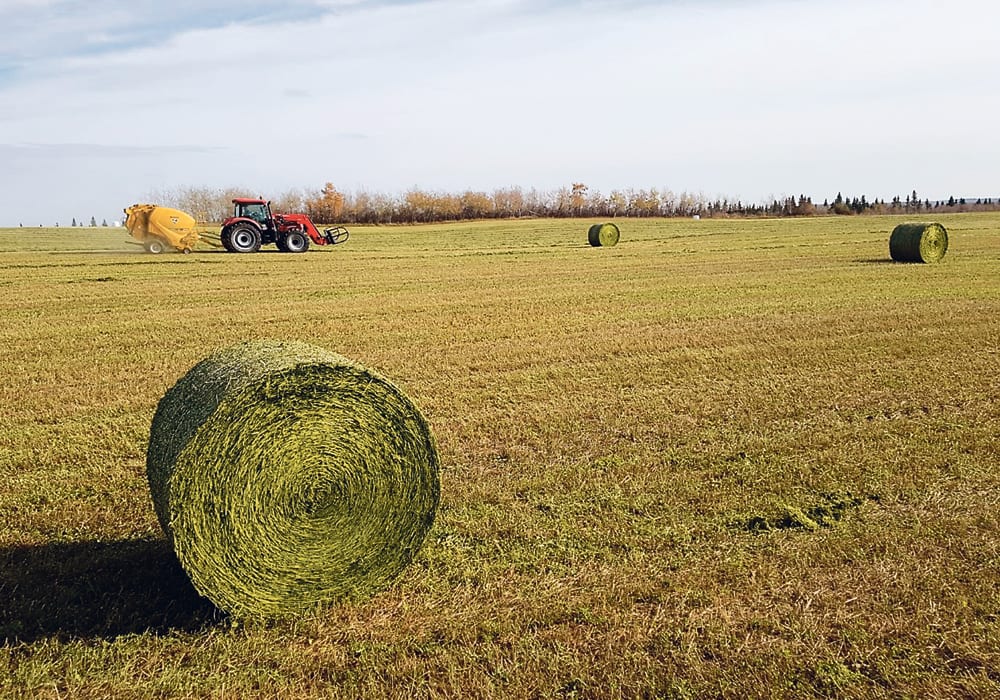FORT KENT, Alta. — Livestock and forage specialists in northeastern Alberta are hoping a relatively new baling technique will lessen woes over delays and feed quality.
Farmers and ranchers in the region have been dealing with wetter-than-normal fall conditions over the last couple years. It’s resulted in delayed baling and quality issues, said Alyssa Krone, a forage and livestock specialist with the Lakeland Agricultural Research Association.
To hopefully fix that, she said specialists will be ensilaging wetter bales over the next three to five years. They want to see if the quality remains intact despite the higher moisture content.
Read Also

Pakistan reopens its doors to Canadian canola
Pakistan reopens its doors to Canadian canola after a three-year hiatus.
“We are hoping to see what they are going to be in comparison to a typical hay bale. We will be comparing it to dry hay so we can compare the quality,” said Krone, who is also the manager of the research association.
When ensilaging the bales with plastic film, it’s expected the same fermentation process would occur as if feed were ensiled in a pit.
Krone said with ensiled bales, producers are generally looking for moisture levels of 45 to 55 percent. These trials, however, are even wetter. Their moisture content is 65 percent or more.
Even though they are wetter, she said there hasn’t been enough research to determine whether higher moisture levels are good or bad. That’s why her team is testing it out.
“The hope is we’ll be able to provide information to farmers,” she said. “It’s such a new concept for us in the area.”
The research association plans to bale and wrap a variety of different crops. They include the typical hay mix, as well as corn, fababeans, soybeans, barley, peas, and an oat-barley mix.
Krone said they are trying corn because farmers are already using it for silage pits. With fababeans, there are some people growing it for grain but it could also make good quality feed.
As for soybeans, she said while the crop isn’t adapted for the area, the trial could help farmers determine whether it makes a good feed source in case they can’t get grain quality.
“One of the local farmers had a bag of older soybean seeds, so we thought we might as well test it,” she said. “If they can’t get grain with it, hopefully they will be able to use it somehow.”
The research association partnered with nearby dealer AgZone, located in Glendon, Alta., for the project.
Shane Kissel, co-owner of the dealership, baled the crops with Vermeer’s 504 Pro. The machine is meant for baling wetter crops, although it can also do standard dry hay.
When baling wet crops, the machine chops and tightly compacts them, reducing the potential for plugging.
Kissel said there has been growing interest in the machine due to recent wet years, but he still needs to convince farmers that it’ll perform well. He hopes the trial results will provide data that show it will work.
“It’s one thing for us as sales people to tell customers it works, but we want to show that it does with proof and show those numbers,” said Julie Kissel, who co-owns the dealership.
Shane said there have been concerns from farmers about the bales freezing in the winter because they are so wet. However, he said because the crops are pre-chopped, it should be able to be easily broken apart.
“Some of that dry hay they are feeding isn’t great quality, so we’re trying to show them these better options that have better feed quality,” he said.
Along with having trial data, he hopes his own results prove the bales don’t experience issues over winter. He created his own bales with the machine.
Shane said the machine is only a bit more expensive than a standard baler. As well, because ensiled bales pack in more nutrients, he believes producers will get more out of their feed — perhaps it could allow them to expand their herd or not overly worry when there are feed shortages.
“If more people do it this way, maybe you could get more tonnage per acre on the same section of land,” he said. “You would have enough feed, even in poor years.”
Krone said the first results from the project are expected to be available in the next couple years. She said researchers will likely make changes throughout the trial to ensure they get the best results.
















